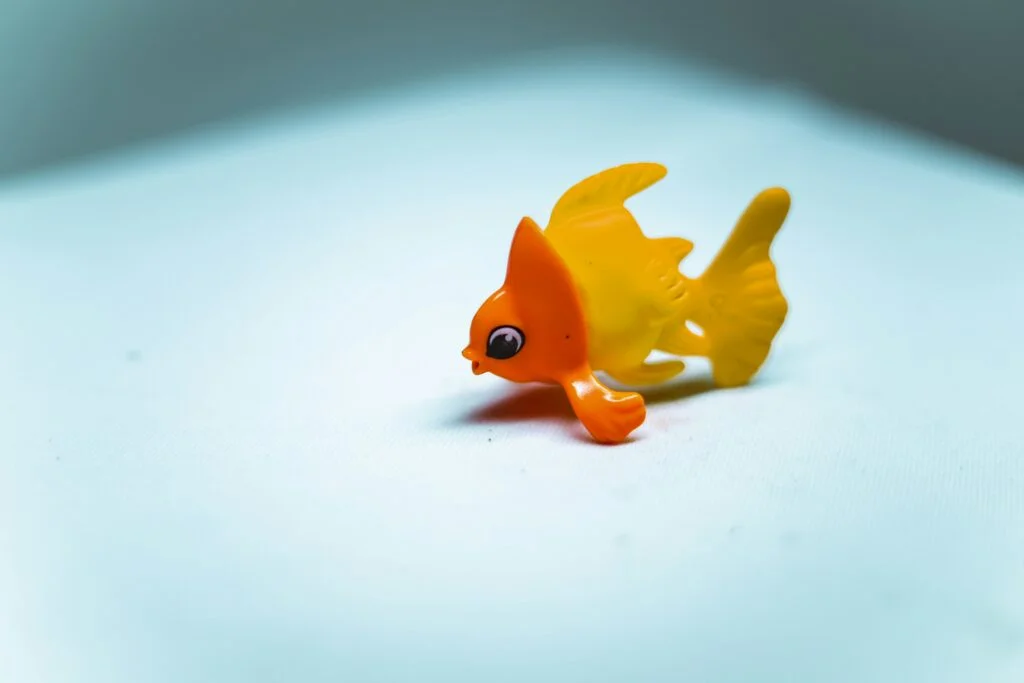The Theory Behind It
Goldfish, often perceived merely as decorative pets, possess a level of intelligence that can be quite surprising. Research demonstrates that these fish can exhibit learning abilities comparable to those of some mammals, challenging the assumptions that prevail about their cognitive capabilities. Goldfish can recognize their owners, remember various tasks, and even differentiate between shapes and colors. This ability to learn is rooted in the principles of behaviorism, particularly classical conditioning.
Classical conditioning, a theory introduced by Ivan Pavlov, suggests that animals can learn to associate a specific stimulus with a reward. In this context, a goldfish can learn to associate a sound, such as a click from a clicker, with a positive reinforcement, such as food. This method of training can lead to significant behavioral changes, as goldfish begin to respond to the clicker by performing certain actions that result in a reward. This indicates a learning process in which the goldfish not only reacts to external stimuli but also alters its behavior based on previous experiences.
By employing this method of training, one can engage with the goldfish on a different level, leading to an enriched interaction. While traditional knowledge might suggest that fish are incapable of such complex learning, the evidence points to their ability to adapt and respond to their environment. It is important to note that fish behavior can vary widely among species, and while goldfish demonstrate notable cognitive skills, individual variations exist. This consideration forms the basis for the experiment I undertook in my endeavor to train my goldfish, affirming that the potential for training and behavioral modification in fish is indeed a plausible undertaking.
Fish Are Smarter Than We Think
Contrary to popular belief, fish, particularly goldfish, exhibit cognitive abilities that challenge the long-held perception of their intelligence. Research has consistently shown that these aquatic creatures possess a notable capacity for learning and memory. For instance, studies have demonstrated that goldfish can be trained to perform tasks, such as navigating mazes, which not only highlights their ability to learn but also suggests a level of problem-solving skills that many might not expect from a simple pet fish.
In one significant study conducted by researchers at the University of Plymouth, goldfish were able to distinguish between different colors and shapes, indicating that they can learn to associate specific cues with rewards. This learning process is akin to classical conditioning, where a fish may learn that performing a certain behavior leads to a treat. Such findings challenge the stereotype that goldfish have a mere three-second memory span. In reality, goldfish have been shown to remember tasks and locations for months, illustrating their cognitive durability.
Furthermore, goldfish possess the ability to recognize their owners, a behavior that implies a degree of social understanding. Research findings have shown that goldfish can differentiate between familiar faces and strangers, reinforcing the idea that these fish have a level of awareness and recognition that contributes to their playful interactions with humans. This capacity for recognition not only fosters a bond between the pet and owner but also adds to the overall enrichment of their environment.
In light of these revelations, it becomes increasingly clear that the intelligence of goldfish has been greatly underestimated. As we continue to delve into the complexities of their behavior and cognitive capabilities, it is only fitting that we reassess how we perceive and care for these remarkable creatures in our aquariums.
Classical Conditioning Basics
Classical conditioning is a fundamental psychological concept that plays a pivotal role in behavior training across various species, including pets such as goldfish. Developed by Ivan Pavlov, this psychological phenomenon involves pairing a neutral stimulus with an unconditioned stimulus to elicit a conditioned response. In the context of training goldfish, understanding this principle is essential for successfully modifying their behavior.
The process begins with the unconditioned stimulus, which naturally provokes a response. For goldfish, this unconditioned stimulus could be food, which automatically elicits a response of swimming eagerly towards the source. The next step involves introducing a neutral stimulus, typically represented by a sound, such as a clicker. At first, this sound holds no significant meaning for the goldfish.
However, through repeated associations between the clicker sound and the delivery of food, the goldfish can learn to connect the two stimuli. As the training progresses, the clicker serves as a conditioned stimulus. Eventually, the mere sound of the clicker can trigger the same eager response as the food itself. The goldfish learns that when it hears the clicker, it can expect a meal. This principle of stimulus-response relationship is crucial in training and behavior modification.
Furthermore, classical conditioning underscores the power of reinforcement in behavior training. For successful results, consistency is vital; the pairing of the clicker sound with food must occur regularly for the fish to solidify the learned connection. By employing classical conditioning techniques, trainers can effectively encourage desired actions from their goldfish, making the process both engaging and rewarding for the fish. The understanding of these basic principles is an essential steppingstone towards embarking on successful behavior training endeavors with your aquatic pet.
The Attempt
In embarking on the journey to train my goldfish, a few essential pieces of equipment were required to facilitate the process. The first and most critical item was the clicker. This small, handheld device creates a distinct sound that serves as a marker, indicating to the fish that it had performed the desired behavior correctly. The idea was to use the clicker in conjunction with positive reinforcement, a methodology often applied in training various animal species.
Furthermore, I selected treats that would be enticing enough to motivate my fish. After research, I opted for small flakes of high-quality fish food, as they are nutritionally beneficial and readily accepted by goldfish. The training sessions were scheduled to occur in a calm environment devoid of distractions, ensuring that my goldfish would remain focused on the task at hand.
Initially, I outlined a straightforward plan that involved three key steps: creating engagement, introducing the clicker, and delivering the treat upon the successful performance of a task. My expectations were cautiously optimistic; I anticipated that my goldfish might respond to the clicker within a few sessions. However, I understood that several challenges could potentially hinder progress.
One anticipated challenge was the inherent nature of goldfish, which typically possess a limited attention span. Moreover, the difference between land animals and aquatic creatures could present unique obstacles, such as the time it takes for them to swim towards the surface for a treat after hearing the click. Recognizing these factors was essential for maintaining realistic expectations. As I prepared to begin the training phase, I remained aware that patience would play a significant role in this experiment.
Clicker and Food Pairing
When training goldfish with a clicker, the initial step involves effectively pairing the sound of the clicker with the presentation of food. This method utilizes positive reinforcement, which is crucial for successfully conditioning the fish. The process began by selecting a consistent feeding frequency. I opted to feed my goldfish twice a day, at approximately the same time each session. This established a predictable routine that would help them associate the sound of the clicker with feeding time.
To initiate the training, I first ensured that I had the goldfish’s attention. I then clicked the clicker and immediately presented a small portion of food. Repeating this process created an association between the clicking sound and the arrival of their meal. The timing of the click is vital; it must occur just as the food is offered to reinforce the connection in the goldfish’s mind. I initially started with one click per feeding session, allowing a short pause before offering the food, thus enhancing the clarity of the association.
Consistency played a significant role in the training process. I committed to using the clicker during every feeding opportunity and maintained the same volume and quality of sound. Over the course of several days, I observed the goldfish appearing more eager and responsive to the click. Their recognition of the clicker sound seemed to strengthen, as they began swimming closer to the surface in anticipation of their meal. This behavior indicated that they were starting to understand the relationship between the click and the provision of food.
As the sessions progressed, I gradually introduced variations in the routine while still using the clicker for positive reinforcement. Adapting the timing of the clicks while maintaining consistency helped solidify their understanding, showcasing the effectiveness of this training method in developing a bond through clicker and food pairing.
Tiny Obstacles and Tricks
Training a goldfish using a clicker may appear straightforward, yet various unexpected obstacles often arise. Goldfish, as members of the carp family, possess innate behaviors that can complicate the training process. One of the primary challenges encountered is the goldfish’s short attention span. These aquatic animals typically react to their environment with curiosity but can be easily distracted by movements, changes in light, or even their own reflections. These distractions can derail even the most meticulously planned training sessions.
Environmental factors also play a significant role in the success of clicker training. For instance, the water temperature, tank environment, and the presence of other fish can impact a goldfish’s mood and willingness to participate in training. A fluctuating water temperature or poor quality can lead to stress, which in turn affects the fish’s responsiveness to clicker cues. Thus, ensuring a stable and clean environment is crucial for effective training.
To overcome these tiny obstacles, patience and observation are essential. Begin training sessions during times when your goldfish appears most active, typically after water changes or feeding times. Creating a consistent routine can kindle the goldfish’s learning potential. Additionally, it is advisable to maintain a quiet training environment, free of sudden loud noises or visual distractions that might startle the fish.
Incorporating gradual steps is another strategy; start with simple tasks and slowly increase the complexity as the goldfish becomes more accustomed to responding to the clicker. This will help build its confidence and assist in reinforcing positive behaviors. With persistence and the right approach, these challenges can be transformed into manageable aspects of the training process.
Success or Total Fail?
The journey of attempting to train my goldfish with a clicker has led me to a series of ups and downs, making it essential to evaluate the outcomes critically. The initial sessions were marked by enthusiasm and curiosity, but as the days passed, the reality of working with an aquatic creature began to surface. Although some moments could be branded as minor successes, there were certainly challenges that hindered the overall training process.
One apparent success was the goldfish’s responsiveness to the sound of the clicker after several days of consistent, positive reinforcement. Occasionally, my goldfish would swim to the side of the tank upon hearing the click, seemingly associating the sound with the prospect of food. This showed an early semblance of communication between us, suggesting that the bonding process was underway. However, this response was sporadic and not consistent, prompting questions about the extent of understanding that truly developed during the training.
On the flip side, there were numerous instances where attempts to engage my goldfish would yield no response at all. This led me to wonder if the goldfish’s motivations differed from those traditionally found in other animals more commonly trained. Several sessions resulted in watching my goldfish swim aimlessly or completely ignore the clicker, which demonstrated the unpredictable nature of animal behavior and learning. These moments were disheartening, causing me to reflect on whether the training technique was appropriate for a creature so different from traditional pets.
This experience underscored the notion that while there were moments of success, they were often outweighed by the obstacles faced. The training process illustrated a fascinating exploration of fish intelligence and adaptability, making it a valuable lesson in patience and understanding animal behavior.
Unexpected Progress
During the journey of clicker training my goldfish, I encountered a series of unexpected progress that truly highlighted the intelligence and adaptability of these aquatic creatures. Initially, I approached the training sessions with skepticism, unsure of how a fish could respond to the auditory cues and positive reinforcement associated with clicker training. However, as the days progressed, I witnessed remarkable changes in my goldfish’s behavior.
One particularly memorable moment occurred after a week of consistent training. I had been using small, specially-formulated fish treats as rewards for successfully completing tasks. To my amazement, my goldfish began to associate the sound of the clicker with the treat, demonstrating a level of responsiveness that I had not anticipated. It started to swim towards me every time it heard the click, showcasing an understanding of cause and effect that defied my expectations.
Furthermore, I observed incremental learning as the training sessions continued. At first, my goldfish required a gentle nudge to navigate through a series of hoops placed in its tank. However, after a few iterations of the training, it began to swim through the hoops with increased confidence and precision. Each successful attempt was met with the clicker sound, followed by the delicious reward, reinforcing its newly-acquired skills.
These breakthroughs were not only gratifying, but they also highlighted the perseverance required in pet training. Even small signs of progress can be incredibly motivating, affirming that goldfish are capable of learning through positive reinforcement techniques similar to those used with other pets. Each training session became an exciting venture into understanding the cognitive capabilities of my goldfish, significantly enriching our bond and changing my perception of what these creatures can achieve.
My Fish Might Be Smarter Than My Dog
As I embarked on the clicker training journey with my goldfish, I had the amusing realization that these little aquatic creatures might just hold an unexpected intellectual advantage over my dog. While dogs are often celebrated for their ability to follow commands and perform tricks, it became increasingly clear that my goldfish exhibited behaviors that were surprisingly complex. The way he navigated the tank, displaying a distinct curiosity and learning ability, made me question traditional perceptions of pet intelligence.
During the training sessions, my goldfish became adept at associating the sound of the clicker with rewards, something I had anticipated would be relatively simple. Each time I clicked, he seemed to understand that a reward awaited him. In contrast, my dog, who had been trained in various commands, often fumbled through basic tricks in pursuit of treats. This led to a humorous juxtaposition between the two training experiences. My dog’s enthusiasm is undeniably charming, yet it sometimes feels like he operates on a slightly more simplistic level compared to the intricate responses I observed in my goldfish.
Of course, dogs and goldfish manifest intelligence in distinctly different arenas. While my dog has a knack for fetching and social interactions, my goldfish demonstrated an intricate understanding of his environment. His ability to navigate obstacles in the tank and respond to stimuli highlighted a form of problem-solving that is easily overlooked. This led me to ponder whether goldfish, with their adaptations to aquatic life, could be underrated in their intellectual capabilities. It is clear that intelligence can be multifaceted and, in some instances, surprising.
This light-hearted reflection emphasizes the varying degrees of intelligence found among pets, making it evident that the world of animal cognition is far richer than commonly assumed. Pet owners may find that their expectations and experiences can reveal unforeseen nuances about their animal companions, whether finned or furry.

It could cover a range of topics related to health, wellness, beauty, personal growth, and social issues, all from the perspective of striving for beauty, intelligence, youthfulness, and impartiality





